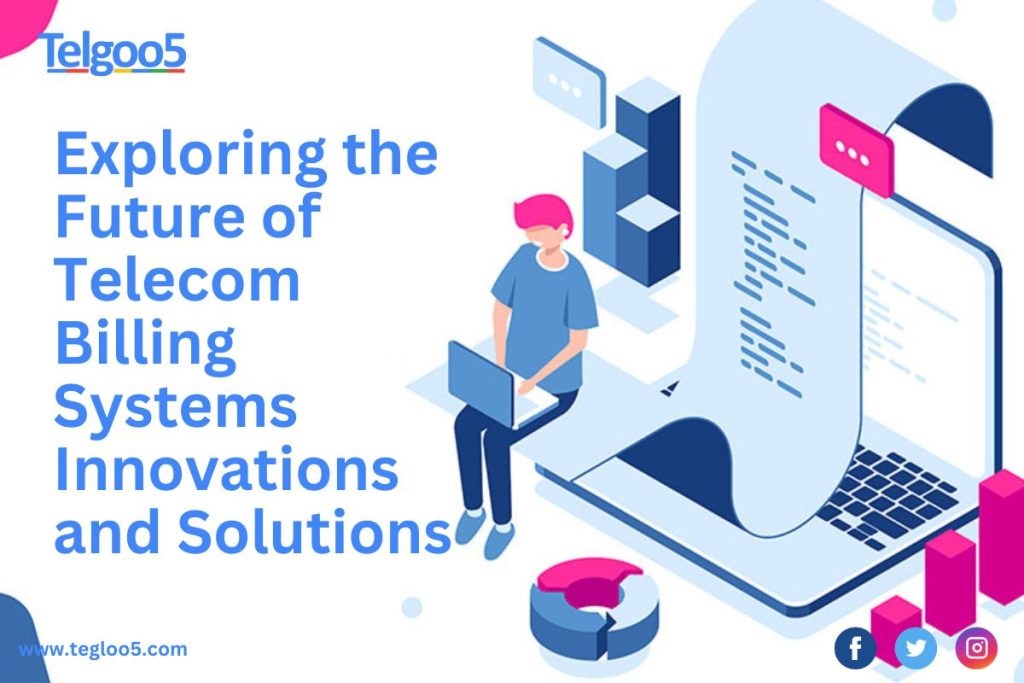The telecommunications industry is profoundly transforming, driven by rapid technological advancements and evolving consumer expectations. At the heart of this evolution lies Telecom Billing Systems, the backbone of telecom providers’ revenue management and customer satisfaction. As the future unfolds, Telecom Billing is set to embrace groundbreaking innovations and solutions that promise to enhance efficiency, accuracy, and user experience. This comprehensive exploration delves into the future of Telecom Billing Systems, highlighting key innovations and solutions poised to reshape the landscape.
Understanding the Current Landscape of Telecom Billing Systems
Before delving into future innovations, it’s essential to grasp the present state of Telecom Billing Systems. Traditional billing systems have primarily focused on accurately tracking usage, generating invoices, and managing payments. However, with new technologies and shifting market dynamics, these systems are evolving to meet more complex demands.
Legacy Systems and Their Limitations
Many telecom providers still rely on legacy billing systems designed for simpler times. These systems often struggle with scalability, flexibility, and integration, leading to inefficiencies and increased operational costs. As customer expectations grow for real-time billing and personalized services, traditional Telecom Billing systems face significant challenges.
The Need for Modernization
The limitations of legacy systems have paved the way for modernization in Telecom Billing Systems. Modern solutions address billing accuracy, data integration, and customer experience, ensuring telecom providers remain competitive in a dynamic market.
Innovations Driving the Future of Telecom Billing Systems
Several key innovations are shaping the future of Telecom Billing Systems. These advancements enhance billing systems’ functionality and transform how telecom providers interact with their customers.
Cloud-Based Billing Solutions
One of the most significant trends in Telecom Billing is the shift towards cloud-based solutions. Cloud computing offers scalability, flexibility, and cost-efficiency that traditional on-premises systems cannot match. By leveraging cloud infrastructure, telecom providers can:
- Scale easily: Adjust resources based on demand without significant upfront investments.
- Enhance Flexibility: Integrate with other cloud-based services and applications seamlessly.
- Reduce Costs: Lower maintenance and infrastructure costs by migrating to the cloud.
Cloud-based Telecom Billing Systems also provide enhanced security and disaster recovery capabilities, ensuring data integrity and business continuity.
Artificial Intelligence and Machine Learning
Artificial Intelligence (AI) and Machine Learning (ML) are revolutionizing Telecom Billing Systems by automating complex processes and providing more profound insights. Key applications include:
- Fraud Detection: AI algorithms can analyze billing data in real-time to identify and prevent fraudulent activities.
- Predictive Analytics: ML models predict customer behavior, enabling personalized billing plans and targeted promotions.
- Automated Customer Support: AI-powered chatbots handle billing inquiries efficiently, improving customer satisfaction.
Integrating AI and ML into Telecom Billing enhances operational efficiency and drives innovation in service offerings.
Real-Time Billing and Payments
In today’s fast-paced world, customers expect real-time billing and instant payments. Future Telecom Billing Systems are moving towards offering real-time processing capabilities, allowing customers to:
- View Instant Usage: Access up-to-the-minute usage data through mobile apps and online portals.
- Make Immediate Payments: Utilize various payment gateways for instant transactions, reducing billing cycles.
- Receive Immediate Notifications: Get real-time alerts for billing events, ensuring transparency and trust.
Real-time Telecom Billing enhances the customer experience by providing timely and accurate billing information, fostering stronger customer relationships.
Blockchain Technology
Blockchain technology holds the potential to transform Telecom Billing Systems by ensuring transparency, security, and efficiency. Key benefits include:
- Immutable Records: Secure, tamper-proof records of transactions enhance trust and accountability.
- Smart Contracts: Automate billing processes and enforce agreements without the need for intermediaries.
- Decentralization: Reduce reliance on centralized systems, minimizing the risk of single points of failure.
By integrating blockchain, telecom providers can streamline billing operations and enhance data security, offering robust solutions for complex billing scenarios.
Internet of Things (IoT) Integration
The proliferation of IoT devices has introduced new billing complexities. Future Telecom Billing Systems must handle diverse data streams and usage patterns from countless connected devices. Innovations in this area include:
- Automated Metering: Automatically track and bill for IoT device usage in real-time.
- Dynamic Pricing Models: Implement flexible pricing strategies based on IoT data analytics.
- Enhanced Data Management: Efficiently process and store large volumes of IoT-generated data.
Integrating IoT capabilities into Telecom Billing Systems enables providers to offer innovative services and scalable billing solutions tailored to the growing IoT ecosystem.

